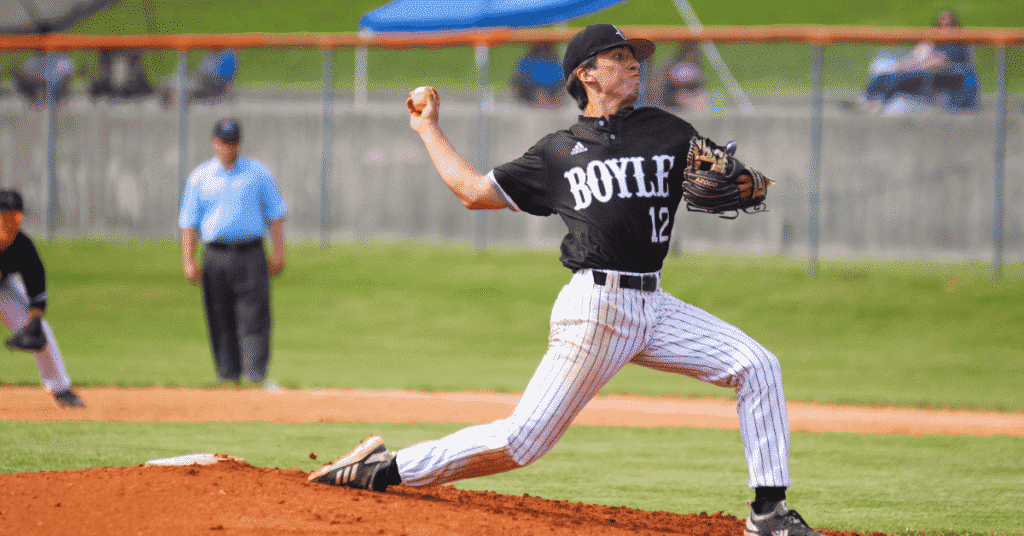Every baseball pitcher dreams of throwing faster and more accurately. A higher pitching velocity can give you a competitive edge, making your fastball tougher to hit and improving your overall performance on the mound. But increasing your velocity isn’t just about throwing harder—it requires proper training, technique, and consistency.
In this guide, we’ll break down the most effective pitcher workouts to increase velocity while also covering essential pitching drills for beginners, pitching exercises for youth, and baseball pitchers exercises. Whether you’re just starting or looking to refine your mechanics, these workouts will help you throw with more power and precision.
Why Pitching Velocity Matters

Pitching velocity is crucial in baseball. A faster pitch gives the batter less time to react, making it harder for them to hit the ball. This can lead to more strikeouts and fewer hits. But increasing velocity isn’t just about throwing harder. It’s about improving your mechanics, strength, and flexibility.
The Science Behind Pitching Velocity
Pitching velocity is influenced by several factors, including:
- Arm Strength: The stronger your arm, the faster you can throw.
- Mechanics: Proper pitching mechanics can help you generate more power.
- Flexibility: Being flexible allows you to move more freely and generate more speed.
- Core Strength: A strong core helps you transfer power from your lower body to your arm.
Pitcher Workouts to Increase Velocity
To increase your pitching velocity, you need to focus on both strength training and pitching-specific drills. Here are some of the best workouts and exercises to help you throw faster.
1. Long Toss Drills
Long toss is one of the most effective ways to increase arm strength and velocity. Here’s how to do it:
- Start by throwing the ball at a comfortable distance.
- Gradually increase the distance until you’re throwing as far as you can.
- Focus on using proper mechanics and throwing with a smooth, easy motion.
Tip: Aim to throw the ball on a line rather than in a high arc. This helps improve your arm speed.
2. Weighted Ball Training
Weighted ball training can help increase arm strength and velocity. Here’s how to incorporate it into your workouts:
- Use a ball that’s slightly heavier than a standard baseball.
- Perform throwing drills with the weighted ball, focusing on proper mechanics.
- Gradually increase the weight of the ball as your arm gets stronger.
Caution: Be careful not to overdo it with weighted balls, as they can put extra strain on your arm.
3. Plyometric Exercises
Plyometric exercises are great for improving explosive power, which is essential for pitching. Here are some exercises to try:
- Medicine Ball Throws: Stand with your feet shoulder-width apart and throw a medicine ball against a wall or to a partner.
- Box Jumps: Jump onto a sturdy box or platform, then step down and repeat.
- Clap Push-Ups: Perform a push-up and clap your hands at the top of the movement.
Tip: Focus on explosive movements and quick, powerful bursts of energy.
4. Strength Training
Strength training is essential for increasing pitching velocity. Here are some key exercises to include in your routine:
- Deadlifts: This exercise strengthens your lower body and core, which are crucial for generating power.
- Bench Press: Strengthens your chest, shoulders, and triceps, which are important for throwing.
- Pull-Ups: Strengthens your back and shoulders, helping you maintain proper mechanics.
Tip: Focus on compound exercises that work multiple muscle groups at once.
5. Flexibility and Mobility Work
Flexibility and mobility are often overlooked but are crucial for increasing pitching velocity. Here are some exercises to improve your flexibility:
- Shoulder Stretches: Stretch your shoulders by reaching one arm across your body and holding it with the other arm.
- Hip Flexor Stretches: Stretch your hip flexors by lunging forward and lowering your back knee to the ground.
- Dynamic Warm-Ups: Perform dynamic stretches like arm circles and leg swings before your workouts.
Tip: Incorporate stretching into your daily routine to improve your overall flexibility.
Pitching Drills for Beginners
If you’re new to pitching, it’s important to start with the basics. Here are some pitching drills for beginners to help you develop proper mechanics and build a strong foundation.
1. Balance Drill
The balance drill helps you develop proper balance and control. Here’s how to do it:
- Stand on the mound with your feet shoulder-width apart.
- Lift your front leg and hold it for a few seconds.
- Lower your leg and repeat.
Tip: Focus on keeping your body balanced and your core engaged.
2. Stride Drill
The stride drill helps you develop a consistent stride length. Here’s how to do it:
- Start in your pitching stance.
- Take a step forward with your front leg, focusing on maintaining proper mechanics.
- Repeat the drill, gradually increasing your stride length.
Tip: Focus on keeping your stride consistent and controlled.
3. Target Practice
Target practice helps you improve your accuracy. Here’s how to do it:
- Set up a target (like a strike zone) on a wall or net.
- Practice throwing the ball at the target, focusing on hitting the same spot each time.
Tip: Start close to the target and gradually move back as your accuracy improves.
Pitching Exercises for Youth
If you’re coaching young players, it’s important to focus on exercises that are safe and effective. Here are some pitching exercises for youth that can help them develop proper mechanics and increase their velocity.
1. Tee Work
Tee work is a great way for young players to practice their pitching mechanics. Here’s how to do it:
- Set up a tee at the height of the strike zone.
- Have the player practice throwing the ball at the tee, focusing on proper mechanics.
Tip: Encourage the player to focus on their form rather than throwing hard.
2. Partner Catch
Partner catch is a simple but effective way for young players to practice their pitching. Here’s how to do it:
- Have the player stand a short distance from a partner.
- Have the player practice throwing the ball to their partner, focusing on proper mechanics.
Tip: Encourage the player to focus on their accuracy and control.
3. Wall Drills
Wall drills are a great way for young players to practice their mechanics without a partner. Here’s how to do it:
- Have the player stand a short distance from a wall.
- Have the player practice throwing the ball at the wall, focusing on proper mechanics.
Tip: Encourage the player to focus on their form and follow-through.
Common Mistakes to Avoid
When working on increasing pitching velocity, it’s important to avoid common mistakes that can lead to injury or poor performance. Here are some mistakes to watch out for:
- Overthrowing: Trying to throw too hard can lead to poor mechanics and injury.
- Poor Mechanics: Improper mechanics can reduce your velocity and increase your risk of injury.
- Neglecting Strength Training: Strength training is essential for increasing velocity, so don’t skip it.
- Ignoring Flexibility: Flexibility is crucial for proper mechanics and injury prevention.
Tip: Focus on proper mechanics and gradual progress rather than trying to throw as hard as possible right away.
Conclusion
Increasing your pitching velocity takes time, effort, and dedication. By incorporating the pitcher workouts, drills, and exercises outlined in this guide, you can improve your arm strength, mechanics, and overall performance. Remember to focus on proper form, avoid common mistakes, and gradually increase your intensity to avoid injury.
Whether you’re a beginner or an experienced player, these tips can help you take your pitching to the next level. So get out there, practice hard, and watch your velocity soar!
Base Blasters is your go-to resource for all things baseball. From expert tips on improving your game to the latest gear reviews, we’ve got you covered. Whether you’re a beginner or a seasoned pro, Base Blasters is here to help you dominate the diamond. Check out our products and resources to take your baseball skills to the next level!


